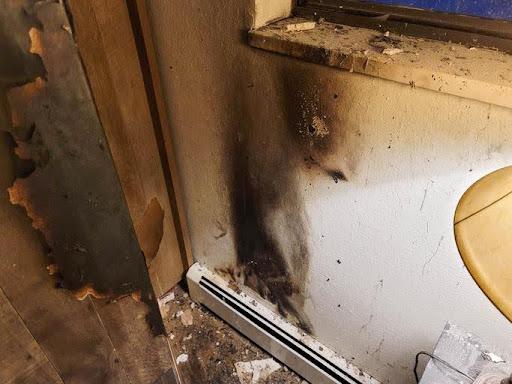Understanding the Hidden Dangers of Soot After a House Fire
July 1, 2024

House fires are devastating events that leave behind more than just charred remains and lost memories. Soot is among the many hazards that linger long after the flames have been extinguished. This fine, black powdery substance can infiltrate every corner of your home, posing significant health risks and complicating the recovery process. Let’s talk about what soot is, what it looks and smells like, why it’s dangerous, and how a professional restoration company can help.
Understanding Its Origins and Composition
Simply put, soot is a type of black powdery or flaky substance that you often see coming from things that burn, like candles, fireplaces, or car exhausts — or in the case of house fires. It is made up of tiny carbon particles that form when something doesn’t completely burn, meaning there isn’t enough oxygen to turn all the carbon into carbon dioxide.
Soot from a house fire is composed of a complex mixture of particles and chemicals, resulting from the incomplete burning of various materials present in the home, like wood, plastics, textiles, building materials, and household chemicals.
Burning of many of these elements, such as plastic and household chemicals, can be toxic.
Identifying Soot: Appearance and Odor Detection in Your Home
Soot is a fine power that’s typically black or dark brown, though the color can vary depending on the source of combustion and the materials burned. Sometimes it can also appear as greasy or oily residue. It often forms a thin, even layer on surfaces, but it can also accumulate in thicker deposits.
Soot can settle on any surface, including walls, ceilings, furniture, and fabrics, often appearing in areas near where the burning started, such as around fireplaces, stoves, or areas affected by fire damage.
It has a distinctive, pungent odor, often described as smoky or acrid. The intensity of the odor can vary depending on the materials burned. Burning plastic has a particularly strong smell.
In the aftermath of a house fire, fire soot can be found on surfaces around the affected areas, with the highest concentration near the area where the fire started. You can also find soot in HVAC systems and ducts.
There are a few ways to test for soot. Using a white cloth or tissue, gently wipe a surface you suspect has soot. If you see black or dark brown residue on the cloth, that’s soot.
Adhesive tape can also be used to lift particles from a surface, which you can then put under a microscope. This can help distinguish soot from other fine particles like dust or pollen. If you do look at soot under a microscope, the particles will appear black with irregular shapes.
Soot's Hidden Dangers
Soot is toxic because it is made up of tiny particles that can get into your lungs when you breathe. These particles are so small that they can go deep into your lungs and even enter your bloodstream. When soot gets into your lungs and blood, it can cause a variety of health problems, including breathing issues, heart problems, increased risk of cancer and a weakened immune system. In the environment, soot contributes to air pollution and can contaminate water and soil.
Safe and Effective Soot Restoration
When handling or cleaning soot after a house fire, it's important to take safety precautions. Use Personal Protective Equipment (PPE), including gloves, masks, and eye protection to avoid direct contact and inhalation. Make sure the area is well-ventilated so any residual fumes or odors can dissipate.
For extensive soot contamination, especially after a fire, consider hiring a professional restoration company with experience in handling fire and smoke damage.
DRYmedic Restoration specializes in eliminating the odors and residues left by fire damage through our smoke and soot removal services. If you’re dealing with cleanup from a house fire, contact DRYmedic today: (513) 657-1028